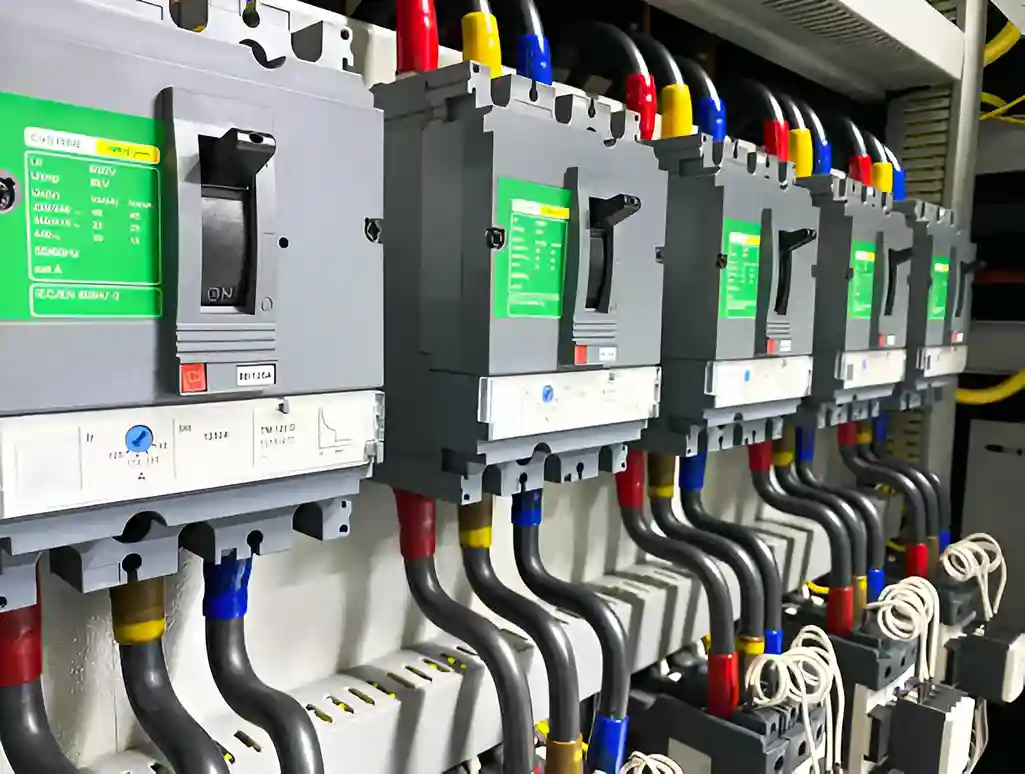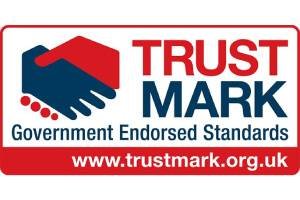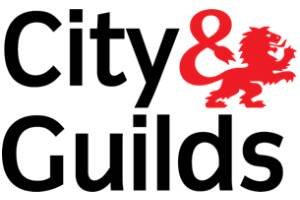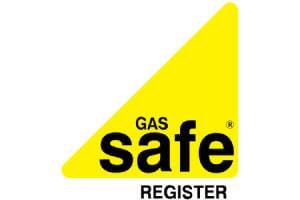
Understanding the difference between EIC and EICR is essential for anyone involved in property management or ownership. Each document plays a fundamental role in ensuring electrical safety and compliance with legal standards. However, many remain unclear about when and why to obtain these certificates. This knowledge can safeguard investments and lives, prompting a closer examination of their specific purposes and implications.
Main Points
- Understanding the difference between EIC and EICR ensures compliance with safety regulations, protecting property owners from legal issues related to electrical installations.
- Knowing when to obtain an EIC or EICR helps maintain electrical safety standards and prevents risks like shocks or fires in properties.
- EICs are essential for new installations, while EICRs assess existing systems, providing clarity on when each document is necessary.
- Awareness of these documents enhances property value and appeal, making it easier to sell or rent homes with verified electrical integrity.
- Familiarity with costs associated with EICs and EICRs aids in financial planning and promotes proactive management of electrical safety.
What Is an EIC (Electrical Installation Certificate)?
An Electrical Installation Certificate (EIC) is a formal document that verifies the safety of an electrical installation. And compliance of electrical installations. A certified electrician issues this document upon completing new electrical work, confirming that the installation complies with all applicable standards and regulations.
The EIC provides essential information about the installation, including details about the type of work carried out, locations of circuits, and test results that validate the integrity of the electrical system.
The certificate is essential for homeowners and property managers, as it not only demonstrates compliance with safety regulations but also serves as evidence of due diligence in maintaining electrical safety.
Without an EIC, individuals may face difficulties in selling their property, as potential buyers often request proof of safe electrical installations. Consequently, an EIC plays a significant role in safeguarding both the occupants and the property itself from electrical risks.
What Is an EICR (Electrical Installation Condition Report)?
The Electrical Installation Condition Report (EICR) provides a comprehensive assessment of existing electrical installations. Performed by a qualified electrician, it assesses the state of electrical systems to verify they comply with safety standards and regulations.
The EICR examines various components, including wiring, sockets, and circuit breakers, identifying potential hazards such as wear and tear, outdated equipment, or faulty installations.
An EICR is essential for both residential and commercial properties, helping to safeguard against electrical shocks, fires, and other serious risks. It typically includes recommendations for necessary repairs or upgrades, contributing to overall safety and reliability.
The report is valid for a specific period, often requiring re-evaluation to maintain compliance and safety standards. As an essential tool for property owners, the EICR highlights the significance of routine electrical assessments in promoting a safe living and working environment.

The Purpose of Each: Certification vs. Condition Reporting
While both certification and condition reporting play essential roles in electrical safety, they serve distinct purposes within the domain of electrical installations.
The Electrical Installation Certificate (EIC) verifies that new electrical work meets safety standards, confirming its quality and safety. Meanwhile, the Electrical Installation Condition Report (EICR) evaluates the ongoing safety of existing installations and identifies any defects or electrical faults.
Key distinctions include:
- EIC: Released for new or modified installations, confirming adherence to standards.
- EICR: Carried out on existing installations to assess their condition over time.
- EIC: A smart measure for new work to prevent future issues.
- EICR: A reactive measure aimed at identifying risks in older systems.
Understanding these distinctions is important for maintaining electrical safety and ensuring compliance with legal requirements.
When Is an EIC Required?
An EIC must be obtained once new electrical installations are finished to verify compliance with safety standards. This certification is essential for installations in residential, commercial, and industrial settings.
Additionally, an EIC is mandated when alterations are made to existing electrical systems, such as the addition of new circuits or the replacement of major components. The certificate serves as a formal declaration by a qualified electrician that the installation has been tested and meets the required regulations.
In addition, EICs are often necessary when properties are sold or rented, as they assure the electrical system’s safety.
Ultimately, obtaining an EIC is primary for safety and compliance, protecting both the property owner and the occupants from danger. Understanding when an EIC is needed is important for maintaining safe electrical premises.
When Do You Need an EICR?
The frequency of an EICR depends on various factors, including the type of property and its usage.
Typically, residential properties need an EICR every five years, and rental properties must also be inspected at least once every five years.
Certain situations might also necessitate an EICR earlier, like:
- Before renting out a property: Ensures tenant safety and adherence to regulations.
- After significant alterations: Changes to the electrical system can affect safety.
- Following a major electrical fault: Exposed electrical faults that may have arisen.
- When selling property: Evaluates the state of the electrical system.
Key Differences Between EIC and EICR Explained
Understanding the difference between EIC and EICR is essential for property owners and electrical professionals.
An EIC is issued upon completion of new electrical installations or modifications, certifying that the work complies with current safety standards. It serves as proof of compliance and is often required for insurance purposes.
In contrast, an EICR evaluates the condition of existing electrical installations, determining any failures or safety issues over time. This report is essential for maintaining compliance with safety regulations and is usually needed periodically or when a property changes ownership.
Understanding these distinctions helps stakeholders maintain safe and compliant electrical systems in their properties.
Legal and Regulatory Requirements in the UK
In the UK, adhering to legal and regulatory standards for electrical safety is essential for both property owners and electricians. Understanding these requirements is integral for ensuring safety and avoiding legal repercussions.
Key aspects include:
- Electrical Installation Conditions: Adherence to the IET Wiring Regulations (BS 7671) is mandatory for all electrical installations.
- Periodic Inspections: Regular inspections, like Electrical Installation Condition Reports (EICR), are necessary to evaluate the safety of existing systems.
- Consumer Protection Laws: Electrical work must comply with the Consumer Rights Act, ensuring that services provided are fit for purpose and of satisfactory quality.
- Local Authority Regulations: Local councils may impose additional regulations, especially for rental properties, reinforcing the need for compliance with safety standards.
Understanding these legal frameworks is essential for maintaining electrical safety and ensuring that both property owners and electricians operate within the law.
How EIC and EICR Affect Property Sales and Lettings
EIC and EICR play a significant role in the property sales and lettings market, influencing both buyer confidence and rental agreements.
These certifications serve as the leading indicators of electrical safety and compliance, assuring buyers and tenants that the property has been appropriately assessed and meets safety standards.
In property sales, having a valid EICR can enhance the attractiveness of a listing, as buyers are more likely to invest in a home with documented electrical integrity.
Similarly, for landlords, an up-to-date EICR is essential for maintaining lawful operations and fostering trust with tenants.
Failing to provide these documents can result in delays or even cancellations of sales and rental agreements.
Ultimately, understanding the difference between EIC and EICR empowers stakeholders in the property market to make informed decisions, ensuring both compliance and safety, which are paramount in property transactions.

The Cost Difference Between EIC and EICR
When comparing the costs associated with EIC and EICR, it becomes evident that several factors influence pricing, including the property’s size and the complexity of the electrical systems.
Typically, EIC is more thorough and may demand higher costs due to its detailed nature. In contrast, an EICR generally obtain lower expenses, as it focuses primarily on examining safety and compliance.
Key factors influencing cost include:
- Property Size: Larger properties might need more comprehensive inspections.
- System Complexity: More intricate electrical systems necessitate a deeper evaluation.
- Geographical Location: Regional pricing variations can affect overall costs.
- Service Provider: Different electricians may offer varying rates based on expertise and reputation.
Understanding these elements can help property owners make informed decisions regarding budgeting for electrical inspections and certifications.
Frequently asked questions.
Conclusion
To summarise, understanding the difference between EIC and EICR is essential for property owners and landlords. Each document serves a specific purpose, ensuring safety and regulatory compliance in electrical systems. By knowing when to obtain an EIC or EICR, individuals can protect their investments, facilitate smoother property transactions, and uphold safety standards. Ultimately, informed decisions regarding these certificates contribute to a safer living environment for all occupants.







